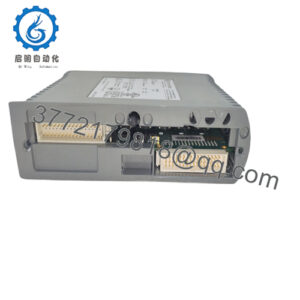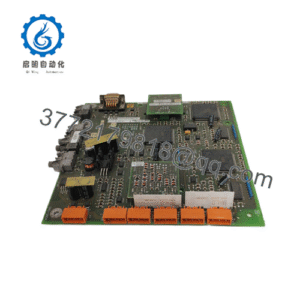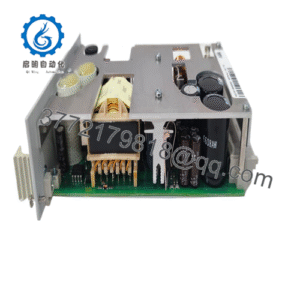Description
| Model Number | URRHH |
| Brand | GE (General Electric) |
| Type | Safety-Certified Universal Relay Module (Dual-Redundant) |
| Input Voltage | 110–250 V AC / 110–300 V DC (Dual Redundant Supplies) |
| Operating Temp Range | -40 °C to +80 °C (-40 °F to +176 °F) |
| Mounting Style | Panel Mount (DIN Rail Compatible, 35 mm) |
| Dimensions | 170 mm (W) x 240 mm (H) x 300 mm (D) |
| Weight | 4.1 kg (9.04 lbs) |
| Interface/Bus | GE UR Backplane, Dual Gigabit Ethernet |
| Compliance | IEC 61850 (Ed. 2.1), IEEE C37.20.3, CE, UL, SIL 4 |
| Supported Protocols | IEC 61850 (MMS, GOOSE, SV), Modbus TCP/IP, DNP3.0, IEC 60870-5-104 |
| Typical Power Draw | 28 W (operating, both cores), 12 W (standby, single core) |

URRHH
The GE URRHH operates as a top-tier, safety-certified universal relay module in GE’s UR series, designed to be the backbone of mission-critical power protection architectures. Unlike standard relays, it functions as a fully redundant processing and communication hub: it features dual independent cores (each with its own memory, power supply, and I/O circuits) that run protection logic in parallel, cross-verifying results to eliminate false trips or missed faults. This dual-redundant design ensures that even if one core or power supply fails, the other takes over instantaneously—with zero interruption to protection functions.
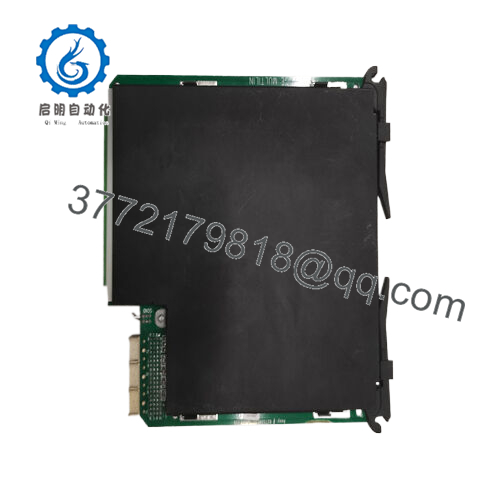
URRHH
The GE URRHH acts as a bridge between field devices (such as merging units, intelligent electronic devices/IEDs, and high-speed circuit breakers) and central SCADA or safety systems, supporting both traditional copper-wired inputs (for legacy transformers) and modern IEC 61850-9-2LE sampled values (for smart grid integration). It integrates directly with GE’s UR backplane for seamless connectivity to UR-series controllers (like the UR9AE or UR8AE) and includes dual 10/100/1000 Mbps Ethernet ports for redundant communication paths. Advanced diagnostics are built into every layer: real-time health monitoring tracks component degradation, fault event recording captures waveform data for post-incident analysis, and remote status polling allows operators to monitor the relay without physical access—critical for hazardous environments. By combining redundancy, smart connectivity, and safety certification, the GE URRHH becomes the cornerstone of power systems where failure is not an option.
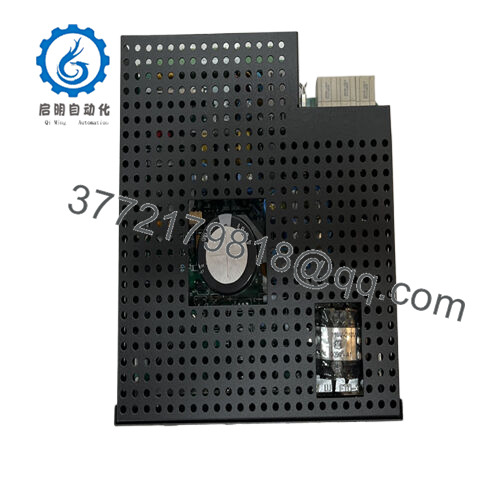
URRHH
Main features and advantages:
Choosing the GE URRHH delivers transformative, risk-mitigating value for engineers responsible for mission-critical power systems. Engineered for extreme durability, its wide operating temperature range (-40 °C to +80 °C) and radiation-tolerant components (rated for up to 10 kGy) make it suitable for harsh environments—from nuclear power plant containment areas to desert transmission substations—where lesser relays would fail. This durability translates to an exceptional 20+ year design life, reducing lifecycle costs by minimizing replacements and unplanned downtime. For example, in a nuclear plant, the GE URRHH’s ability to operate reliably for decades eliminates the need for frequent, high-risk maintenance in radiation-exposed areas.
Safety and compliance are another defining benefit. As a SIL 4-certified module, it meets the highest international safety standards for systems where failure could lead to severe injury or environmental harm. Its dual-redundant architecture eliminates single points of failure: if one power supply, core, or communication port malfunctions, the other takes over in under 1 ms—ensuring protection functions never stop. Integration with smart grid technologies also simplifies modernization: the GE URRHH supports IEC 61850-9-2LE sampled values, allowing engineers to replace bulky traditional transformers with compact merging units while improving data accuracy. Additionally, its seamless integration with GE’s EnerVista software reduces engineering overhead—teams can configure, monitor, and troubleshoot both redundant cores from a single interface, eliminating the need for specialized training on separate systems.
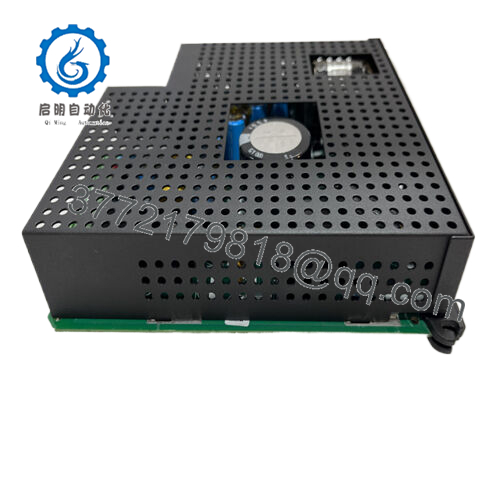
URRHH
Application fields:
The GE URRHH is deployed exclusively in industries where power system failure carries catastrophic consequences, starting with nuclear power. In nuclear plant safety-related systems (such as emergency core cooling or containment cooling), it protects auxiliary power buses by detecting overcurrents, voltage sags, or phase imbalances—triggering corrective actions in under 10 ms to prevent equipment damage and ensure compliance with regulatory standards (like NRC 10 CFR Part 50). For example, in a pressurized water reactor, the GE URRHH monitors the emergency diesel generator’s output, ensuring it activates and maintains stable power during a grid outage.
In data centers—where even a 2-second outage can cost millions in lost revenue—the GE URRHH protects UPS systems and critical power distribution buses. Its dual-redundant design ensures that if one relay core fails, the other continues to monitor for faults (like short circuits in server racks) and trigger breakers to isolate issues, preventing widespread outages. It’s also a key component in high-voltage direct current (HVDC) transmission systems, where it manages the protection of converter stations—critical for long-distance power transfer from renewable energy sources (like offshore wind farms) to urban grids. The GE URRHH’s ability to handle high-speed data streams and ultra-fast fault response ensures HVDC systems remain stable, even during grid disturbances. In all these use cases, the GE URRHH excels in environments requiring SIL 4 safety compliance, zero downtime, and extreme durability—making it irreplaceable for mission-critical power protection.
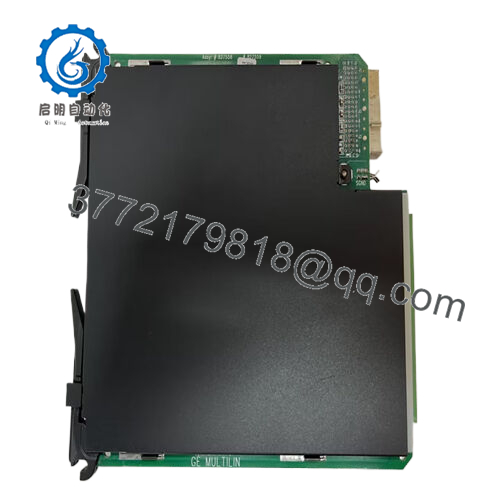
URRHH
Related products:
GE UR9AE – Full-featured UR-series controller, optimized for pairing with the URRHH to deliver complete substation automation with safety integration.
GE URRHH-S – Enhanced URRHH model with built-in radiation shielding, designed for nuclear power plant containment zones.
GE UR8HH – Mid-tier, SIL 3-certified variant of the URRHH, ideal for non-safety-critical but high-reliability applications (e.g., industrial backup generators).
GE URRHH-P – Process bus-focused URRHH with 8 additional sampled value (SV) ports, for large-scale merging unit integration in smart substations.
GE URRHH-T – Transformer protection-specialized URRHH, pre-configured with differential protection logic for large power transformers (50 MVA+).
GE UR8LH – Legacy UR-series module, compatible with the URRHH for gradual upgrades from older GE protection systems.
GE URRHH-I – High-isolation URRHH variant, designed for environments with extreme electrical noise (e.g., near HVDC converter stations or arc furnaces).
GE URRHH-B – URRHH model with extended battery backup (48 hours), ensuring operation during prolonged grid outages in remote locations.
Installation and maintenance:
Before installing the GE URRHH, take critical steps to ensure safety, compliance, and optimal performance. First, verify firmware compatibility with your UR-series controllers: the GE URRHH requires controller firmware version V6.0 or higher to support its dual-redundant logic and SIL 4 features. Next, assess the mounting environment: while DIN rail-compatible, the module needs 100 mm of clearance on all sides to accommodate airflow (critical for maintaining performance at +80 °C) and to allow access for redundant wiring. Inspect the input power supply to confirm it meets the 110–250 V AC / 110–300 V DC range, and use separate power feeds for each redundant supply to eliminate common-mode failures. Pre-configure the relay’s redundancy settings in EnerVista: this includes defining core synchronization parameters, setting up cross-check intervals for parallel logic, and mapping GOOSE/SV signals to both cores. For safety-critical applications (like nuclear plants), perform a pre-installation SIL verification test with a third-party auditor to confirm compliance. Finally, test communication with downstream IEDs in a lab environment—verify that both cores can independently receive data and trigger actions before on-site deployment.
Ongoing maintenance for the GE URRHH is focused on preserving redundancy and validating safety performance. Monthly, review the relay’s front-panel LED status (dual green LEDs indicate both cores are operational; amber indicates a single core active) and check EnerVista logs for synchronization errors or core mismatch warnings. Every three months, inspect the module’s wiring terminals and Ethernet ports for corrosion or loose connections—tighten terminals to the recommended torque (1.2 Nm for signal wires, 1.8 Nm for power wires) and clean ports with lint-free cloths (avoid compressed air in dusty environments). Semi-annually, perform a redundancy test: intentionally disable one core or power supply to confirm the other takes over seamlessly, with no interruption to protection functions. Annually, conduct a full functional test using a calibrated relay test set: inject simulated faults (e.g., three-phase short circuits, voltage collapses) and verify the GE URRHH triggers the correct actions within the specified 10 ms response time. Also, update firmware to the latest version during planned outages—GE releases quarterly updates to address security vulnerabilities and enhance compatibility with new IEDs.
Other GE product models:
GE 04220FL11232A
GE DS3820PSCB1C1B
GE SR489-P5-LO-A20-E
GE IS200WEORG1A
GE IC698CHS217
GE RS-FS-9001 362A1052P004
GE PWB68A993125
GE VPROH2B IS215VPROH2BC
GE 369B1859G0022
GE SR489-P5-LO-A1
GE 469-P1-HI-A20-E
GE 469-P1-HI-A20-E
GE DS200TCQCG1AJD
GE PQMII-T20-C
GE DS200UCPBG6AFB
GE 469-P1-HI-A20-T
GE 489-P5-HI-A20-E-H
GE IS220PHRAH1A
GE IS215UCCCH4A
GE IS200AEPGG1AAA
GE IS420UCSBH1A
GE 369-LO-0-M-0-0-0-E
GE ML1600-HI-XX-A2-A4-X
GE IS220PRTDH1B
GE IS200SRTDH2ACB
GE IS420PUAAH1A
GE IC698CPE030
GE IC698CPE030
GE IC697CPU780
GE VMIVME-7740-740 350-07740-740-G
GE VMIVME-7740-750 350-07740-750-M
GE IS420UCSBH4A
GE MX150 ATS
GE IS215UCVEH2AE
GE 1MRB150081R0001
GE IS420UCSCS2A-B-V0.1-A
GE IS420YAICS1B

 WhatsApp: +86 16626708626
WhatsApp: +86 16626708626 Email:
Email:  Phone: +86 16626708626
Phone: +86 16626708626
